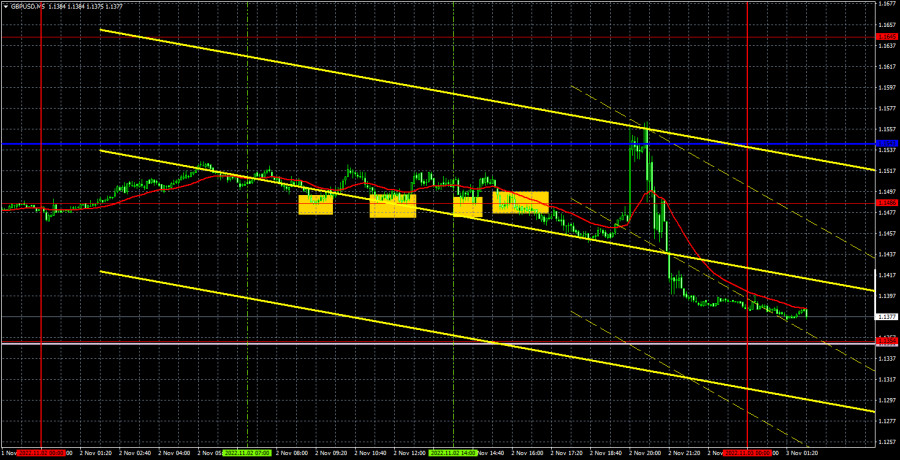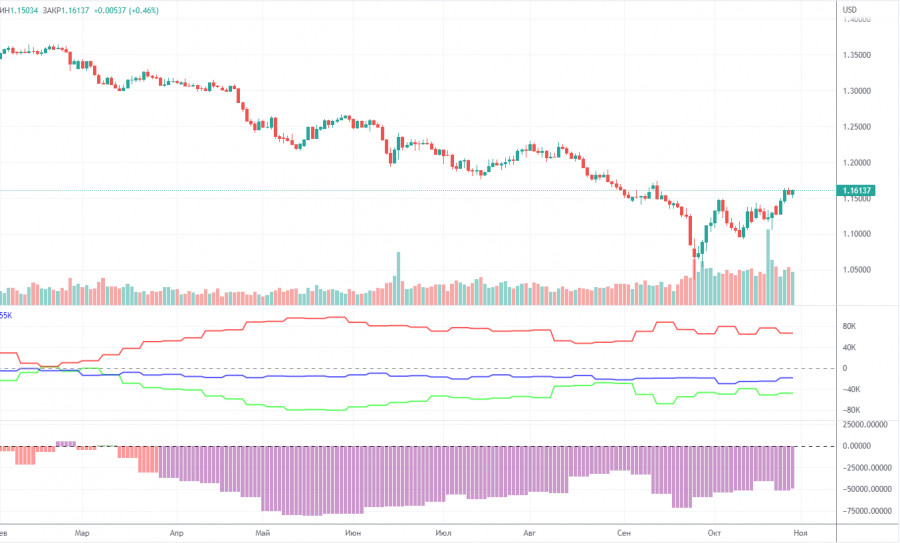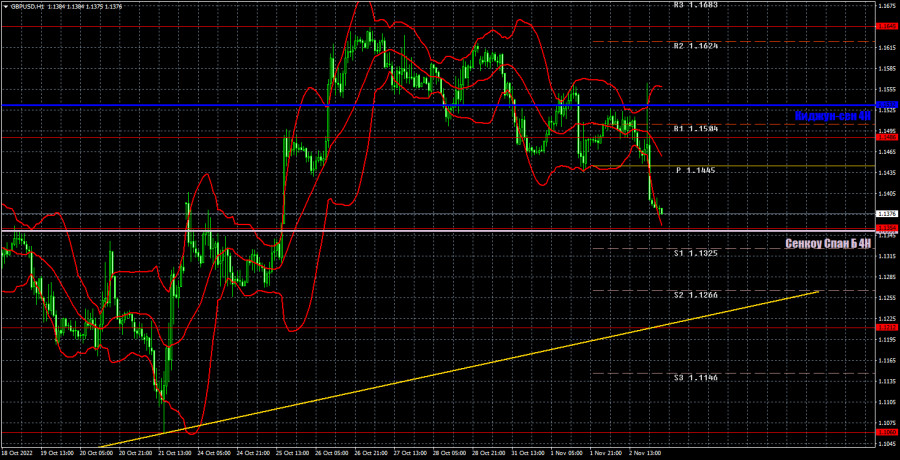

The GBP/USD currency pair was trading with low volatility and a slight downward slope for most of the day on Wednesday. Approximately the same picture was observed in the last few days. Of course, after the results of the Federal Reserve meeting were announced, the pair first soared up and then collapsed. We warned that movements can be versatile and very strong. In principle, there is nothing more to consider yesterday. Any conclusions about the Fed meeting, its results and the market reaction to them can be made no earlier than Thursday afternoon. However, the results of the Bank of England meeting will be announced on Thursday afternoon. Therefore, it will be very difficult to even understand what exactly traders reacted to and at what time. Today you just need to survive, and tomorrow it will be possible to draw the first conclusions. But even Friday would not be a quiet day, as the most important reports on the labor market and unemployment will be published in America.
The pair was absolutely flat during the entire Asian session, the entire European and half-US session. Therefore, it is not at all surprising that four false signals were formed - all around the same 1.1486 level. We want to note that the signals were not the worst yet, as the first three were buy signals. Consequently, traders could work out the first of them (the position was closed by Stop Loss at breakeven), the second one (it should have been closed manually when it became clear that the pair was in a flat) and that's it. All other signals should not be processed. Therefore, yesterday's flat could have been overcome without losses.
COT report
The latest Commitment of Traders (COT) report on the British pound showed a slight weakening of the bearish sentiment. In the given period, the non-commercial group opened 3,200 long positions and closed 200 short positions. Thus, the net position of non-commercial traders increased by 3,400, which is very small for the pound. The net position indicator has been growing slightly in recent weeks, but this is not the first time it has risen, but the mood of the big players remains "pronounced bearish" and the pound remains on a downward trend in the medium term. And, if we recall the situation with the euro, then there are big doubts that based on the COT reports, we can expect a strong growth from the pair. How can you count on it if the market buys the dollar more than the pound? The non-commercial group now has a total of 91,000 shorts and 43,000 longs open. The difference, as we see, is still very large. The euro cannot show growth if the major players are bullish, and the pound will suddenly be able to grow if the mood is bearish? As for the total number of open longs and shorts, the bulls have an advantage of 18,000 here. But, as we can see, this indicator does not help the pound too much either. We remain skeptical about the long-term growth of the British currency, although there are still certain technical reasons for this.
Analysis of GBP/USD, 1-hour chart
The pound/dollar pair is moving upwards on the one-hour chart, which so far looks quite convincing. The price went only slightly below the Kijun-sen line, which is not yet critical for the dollar's prospects. The dollar rose last night, but today the pound could also grow, because the BoE is also going to raise its rate. If this does not happen, then it will be possible to conclude that the bulls are no longer going to buy, and the pair may resume a long-term downward trend. On Thursday, the pair may trade at the following levels: 1.1060, 1.1212, 1.1354, 1.1486, 1.1649, 1.1760, 1.1874. Senkou Span B (1.1351) and Kijun-sen (1.1532) lines can also give signals if the price rebounds or breaks these levels. The Stop Loss level is recommended to be set to breakeven when the price passes in the right direction by 20 points. The lines of the Ichimoku indicator may move during the day, which should be taken into account when determining trading signals. Also, there are support and resistance levels that can be used to lock in profits. The results of the BoE meeting will be announced in the UK, and we will also receive a report on business activity in the services sector. Meanwhile, indexes of business activity in the service sector S&P and ISM are scheduled in America. In general, today can also be a very volatile day.
What we see on the trading charts:Price levels of support and resistance are thick red lines, near which the movement may end. They do not provide trading signals.
The Kijun-sen and Senkou Span B lines are the lines of the Ichimoku indicator, moved to the one-hour chart from the 4-hour one. They are strong lines.
Extreme levels are thin red lines from which the price bounced earlier. They provide trading signals.
Yellow lines are trend lines, trend channels, and any other technical patterns.
Indicator 1 on the COT charts reflects the net position size of each category of traders.
Indicator 2 on the COT charts reflects the net position size for the non-commercial group.